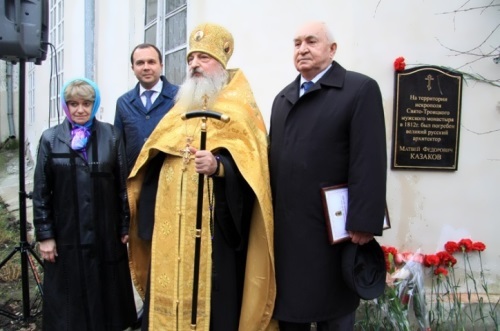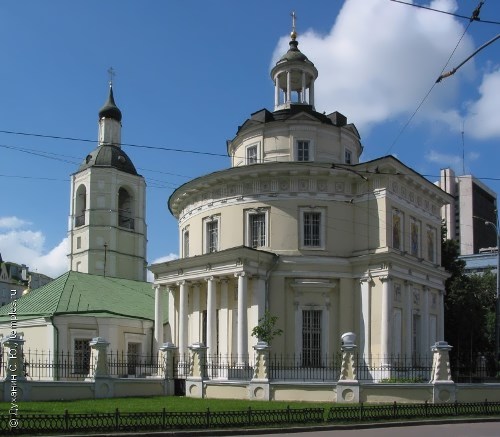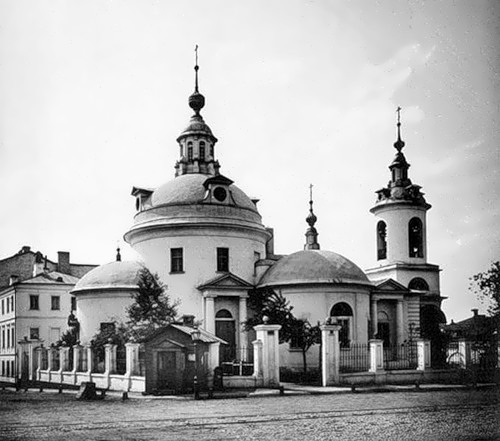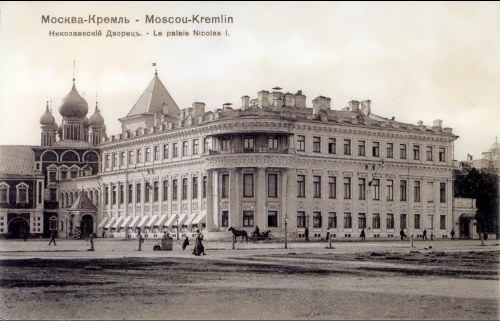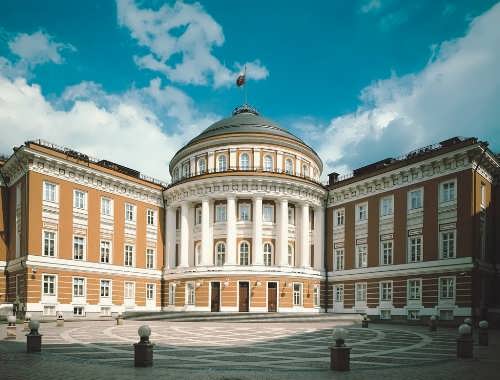Matvey Kazakov – Russian architect
At the end of October 1812, the news of the terrible fire, that broke out in Moscow after the entry of the Napoleonic army, reached Ryazan. The idea that two-thirds of Moscow’s buildings were destroyed was especially unbearable for one of the capital’s refugees, because architect Matvey Kazakov invested all his talent in decorating Moscow with magnificent buildings in the style of classicism and Russian Gothic.
The boy was born in 1738 into a family of a serf, who rose to a significant clerical rank. Thanks to the merits of the father, the future architect Kazakov was admitted to the school of famous architect Dmitry Vasilievich Ukhtomsky in 1751. Dmitry Vasilievich had built many buildings in the era of Queen Elizabeth.
In addition to the magnificent art school, Kazakov acquired practical skills in the organization of construction, in the selection of materials and technologies. This became his distinctive quality. The architect became a staunch supporter of the organic classical style.
In the spring of 1763, a terrible fire destroyed Tver. Petr Romanovich Nikitin, student of Ukhtomsky, was instructed to restore the city. Kazakov became a part of Nikitin’s team and worked on one of the most important objects – the home for the head of the church. Catherine II herself highly appreciated the restored city and called it the second most beautiful city (after St. Petersburg) in Russia. That work made the architect’s name known, and he began to receive private orders from the richest and most noble people of Russia. So, for P.F. Nashchokin he built a magnificent Rai-Semyonovskoye manor on the Nara River, near Serpukhov.
Vasily Bazhenov (1738-1799) was a great Russian architect, the same age as Kazakov. By the time of their meeting, Bazhenov had already studied European architecture after graduating from the Academy of Arts, and spent many years in France and Italy. He made the models of St. Peter’s Cathedral in Rome and the Louvre Gallery in Paris, absorbed the knowledge and experience of the leading masters of French classicism. Unlike Bazhenov, Kazakov did not leave Russia, so he tried to add to his practical experience and Bazhenov’s notion of architecture as a high art, to discover new beauty in combinations of volumes, in planning decisions, in the refinement of decor. Bazhenov liked the work of Matvey Fedorovich, and Vasily cooperated with him to work on the grandiose orders received from the empress herself.
In 1775, there was a celebration in Moscow on the occasion of the annexation of the Crimea and the conclusion of the Kuchuk-Kainarji peace treaty with the Turks. For this, temporary wooden pavilions depicting Turkish cities were erected on the Khodynka Field. The work was entrusted to the team led by Bazhenov, whose closest assistant was architect Kazakov. As a result of the combination of bizarre Oriental elements and classical proportions, a festive, deliberately theatrical, decorative style was born, which is usually called pseudo-gothic, or Russian Gothic. The Empress liked it very much, and ordered to build the Travel Palace near the Khodynka Field, which she needed to rest after a long journey from the Northern capital. Kazakov became the head of the project. It was one of the peaks of the Russian Gothic, making Kazakov the leading Russian architect.
When there was a need for a large state building, Kazakov was involved in its design. And the triangular building of the Senate became the new peak of his work. The dome above the hall amazes with the size. The classical state building harmoniously fit the ensemble of the main square and the whole city center.
The palace and park ensemble, which was named Tsaritsyno, was built on the lands bought by Catherine in 1775. Bazhenov began the construction, which was completed by Kazakov. Now Tsaritsyno is a popular holiday destination and one of Moscow’s sights.
Since the late seventies of the eighteenth century, Kazakov became the Chief Architect of Moscow. Among his masterpieces there are many religious and private buildings and private estates. Unfortunately, many of his works were destroyed by the fire during Napoleonic invasion.
Russian Gothic was the whim of rich and royal customers, and Kazakov mainly built in the favorite classical style. The Church of Cosmas and Damian on Maroseyka is an amazing masterpiece.
In addition to a large number of palaces, churches, private mansions, educational buildings, he built 3 hospitals, each of which became a decoration of Moscow.
Moreover, Kazakov became a teacher of great number of masters.
The great architect died in Ryazan on October 26, 1812. Matvey Kazakov could not survive the great fire of Moscow (1812) and the destruction of his works. But the revived Moscow still keeps the memory of its great builder.
In 1939 Gorokhovskaya Street in Moscow was renamed after the great Russian architect.


